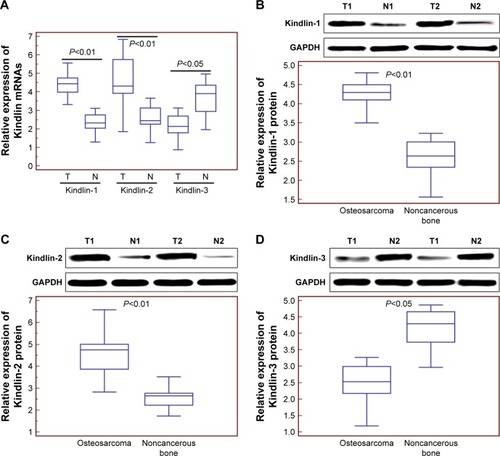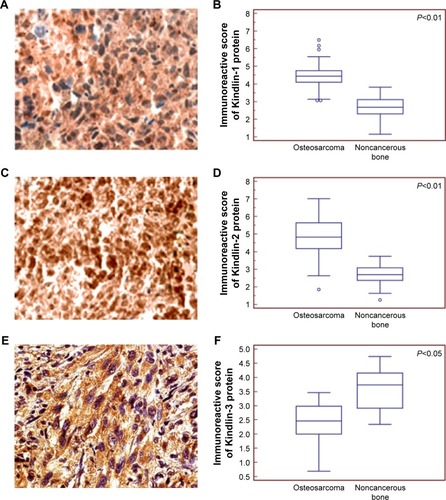Figures & data
Table 1 Association between the expression of Kindlin proteins and various clinicopathologic features of osteosarcoma patients
Figure 1 Kindlin gene and protein expression levels in human osteosarcoma tissues.
Abbreviations: GAPDH, glyceraldehyde 3-phosphate dehydrogenase; PCR, polymerase chain reaction.

Figure 2 Subcellular localizations and expression patterns of Kindlin proteins in human osteosarcoma tissues.

Figure 3 Kaplan–Meier overall (A–C) and disease-free (D–F) survival curves for osteosarcoma patients based on Kindlin-1 (A and D), Kindlin-2 (B and E) and Kindlin-3 (C and F) protein expression.

Table 2 Multivariate survival analysis of overall and disease-free survivals in 100 patients with osteosarcomas
